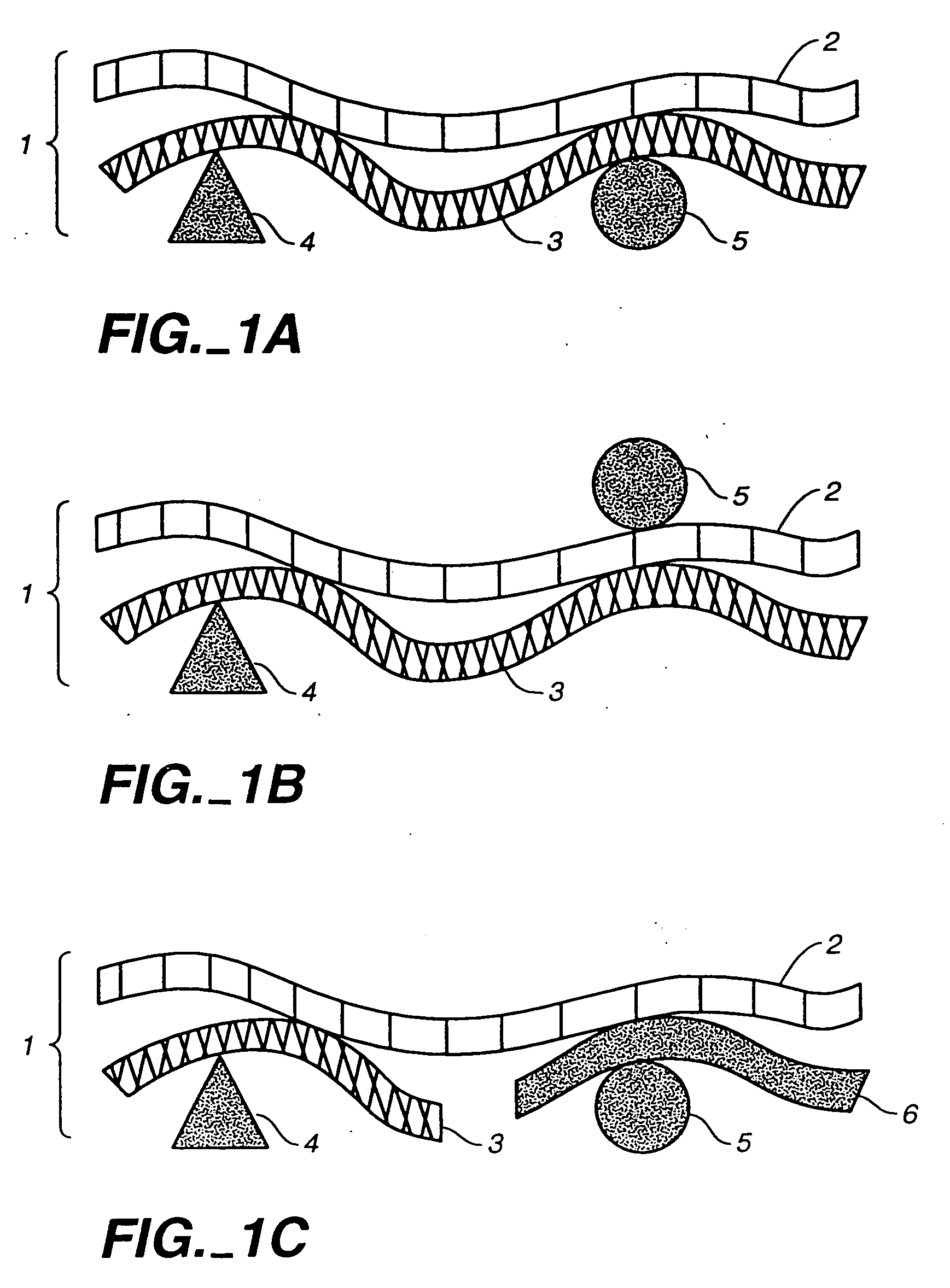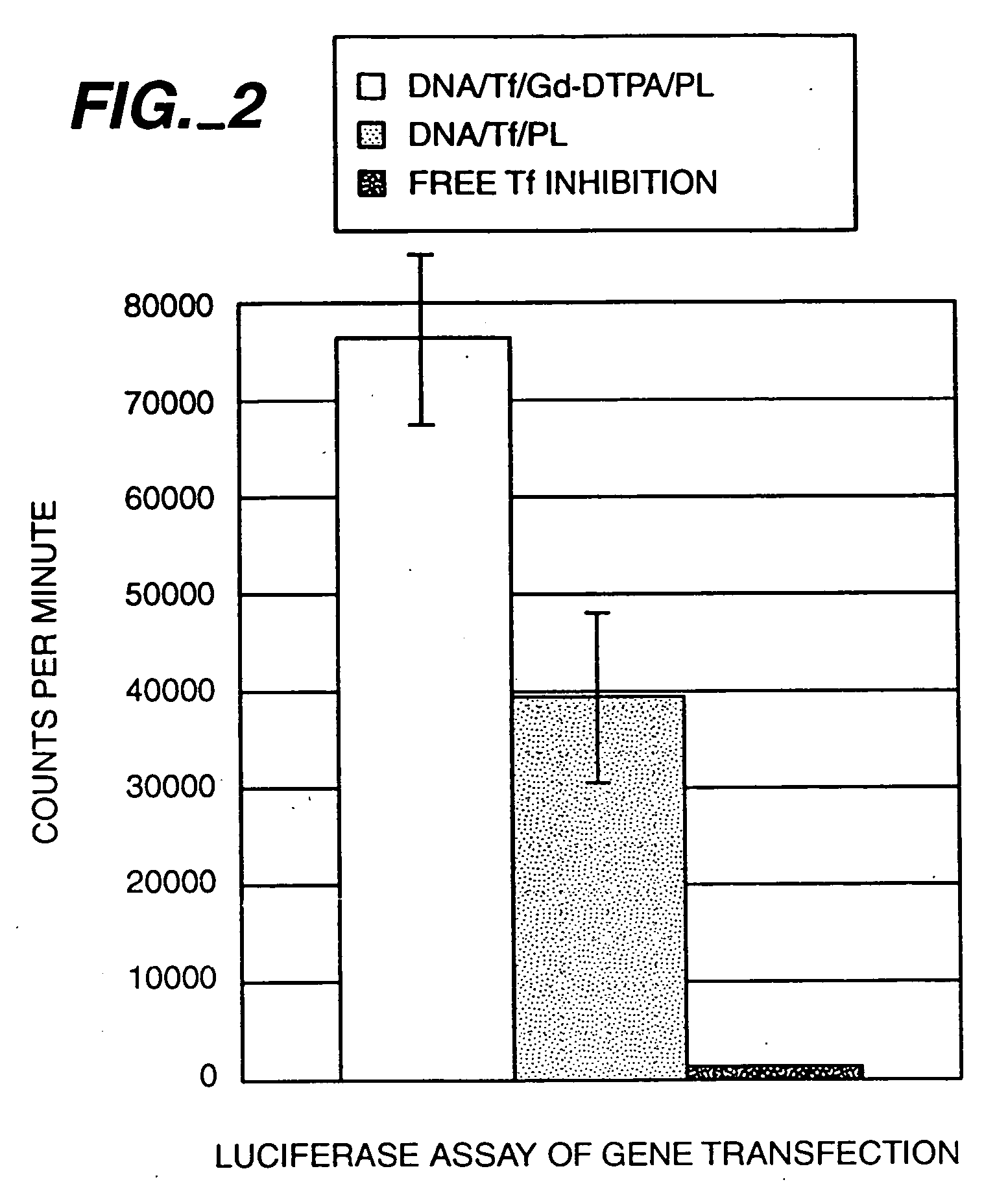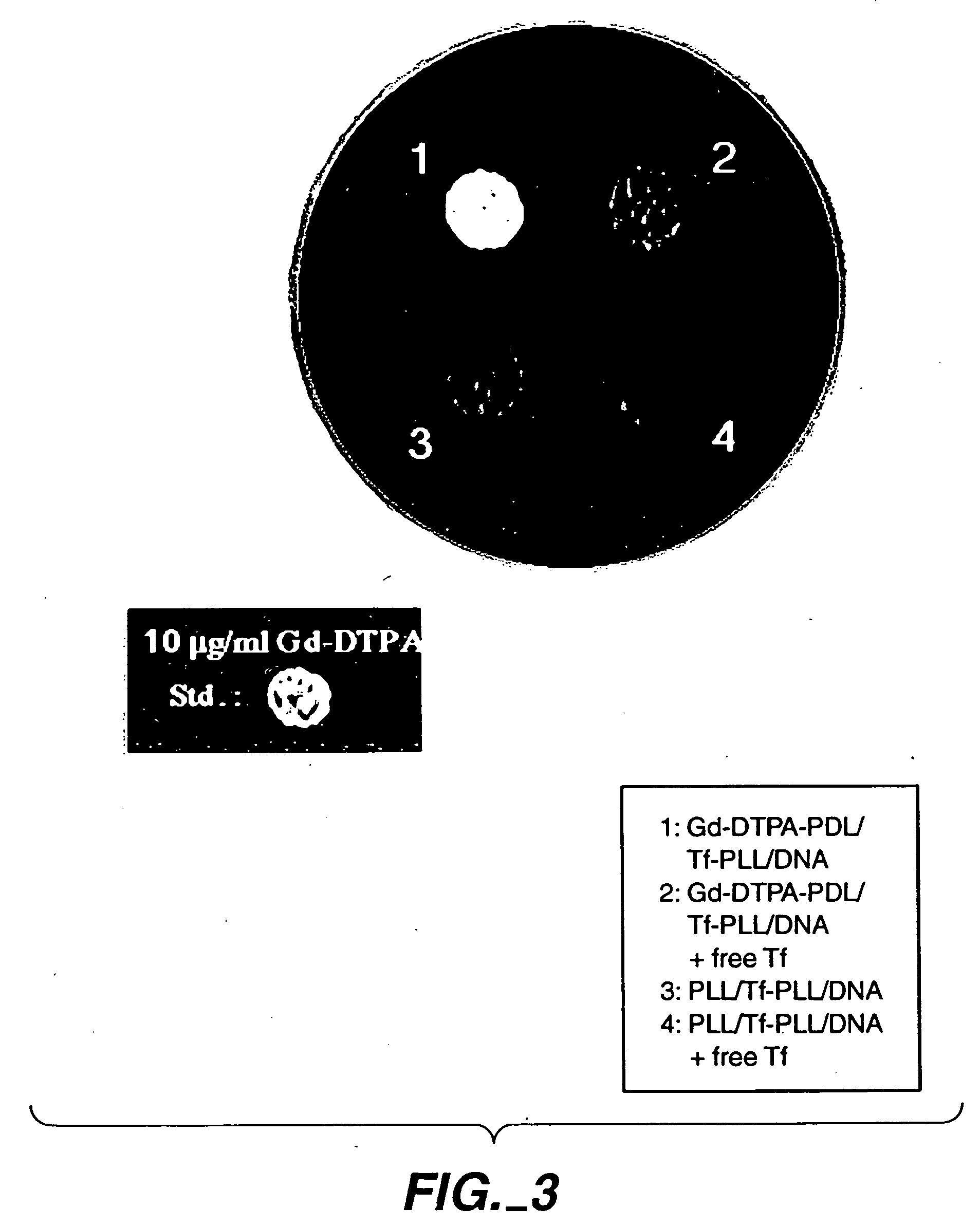Cell-specific gene delivery vehicles
a cell-specific gene and vehicle technology, applied in the field of magnetic resonance imaging, can solve the problems of unattainable standard techniques, gd binding to antibodies is only slightly better, and the labeling of specific tissues for diagnostic radiology remains a difficult challenge for mri, so as to improve the cell- and tissue-specific delivery of physiological agents
- Summary
- Abstract
- Description
- Claims
- Application Information
AI Technical Summary
Benefits of technology
Problems solved by technology
Method used
Image
Examples
example 1
Preparation of Transferrin-Poly-1-L-Lysine
[0086] Human apo-transferrin was purified by size exclusion chromatography and dissolved in 30 mM sodium acetate buffer (pH 5.0). At 4° C., 20 molar equivalents of sodium periodate were added. The reaction to oxidize the transferrin carbohydrate (N-acetylneuraminic acid) to its aldehyde form, was allowed to proceed at 4° C. for 120 minutes. The modified transferrin was purified by size-exclusion chromatography and added immediately to a solution containing 0.5 equivalents poly-L-lysine (average chain length=180 subunits) in 100 mM sodium acetate buffer (pH 5.0). The reaction product was reduced to the secondary amine with the addition 800 equivalents of sodium cyanoborohydride in four aliquots at 1 hour intervals [Wagner et al., Proc. Natl. Acad. Sci. USA 89: 7934-7938 (1992)].
[0087] The transferrin modified poly-L-lysine was fractionated by size-exclusion chromatography. The fraction determined to contain polylysine modified with on avera...
example 2
Preparation of DTPA-Poly-D-Lysine
[0088] The conjugation of polylysine with DTPA dianhydride was accomplished using modifications of standard literature procedures [Hnatowich et al., J. Immunol. Methods 65: 147-157 (1983)]. Polylysine modified at 5 to 20% of the monomer sidechains was prepared in order to balance the desire for high signal strength of the Gd-containing particles against the need to maintain the DNA binding capacity of the polycationic chain.
[0089] Fifty milligrams of poly-D-lysine (average chain length=180 subunits) was dissolved in 20 ml of 0.5M sodium carbonate buffer (pH 9.8), and placed in a 50 ml round bottom flask equipped with a stirring bar. Freshly prepared DTPA anhydride was added (100, 200 and 400 fold equivalent excess in separate reactions) in 10 equal portions over a period of 1 hour. The pH of the reaction was maintained at 9.8 by the addition of 3% sodium hydroxide solution. The DTPA modified poly-D-lysine was purified by size exclusion chromatograp...
example 3
Formation of Tissue-Specific / MRI Contrast Agent Complex
[0092] The “GeneLight” plasmid was purchased from Promega Corp. (Madison, Wis.) and prepared in large quantities using standard procedures. This plasmid contains the luciferase gene (P. pyralis) under the control of the SV40 enhancer / promoter resulting in strong luciferase expression in mammalian cells, such as the K562 human line used in this study. The expression of this gene is easily monitored by measuring light production in extracts of transfected cells.
[0093] Typically, 6 μg of plasmid was added to suboptimal quantities of transferrin-polylysine in 0.5 ml HEPES buffered saline (150 mM sodium chloride, 20 mM HEPES, pH 7.3) and allowed to form complexes for 10 minutes at room temperature [Wagner et al., Proc. Natl. Acad. Sci. USA 88: 4255-4259 (1991)]. Varying amounts of poly-D-lysine or Gd-DTPA-poly-D-lysine were added to the solution to completely neutralize the negative charge by forming ternary complexes with the DNA....
PUM
| Property | Measurement | Unit |
|---|---|---|
| pH | aaaaa | aaaaa |
| pH | aaaaa | aaaaa |
| pH | aaaaa | aaaaa |
Abstract
Description
Claims
Application Information
 Login to View More
Login to View More - R&D
- Intellectual Property
- Life Sciences
- Materials
- Tech Scout
- Unparalleled Data Quality
- Higher Quality Content
- 60% Fewer Hallucinations
Browse by: Latest US Patents, China's latest patents, Technical Efficacy Thesaurus, Application Domain, Technology Topic, Popular Technical Reports.
© 2025 PatSnap. All rights reserved.Legal|Privacy policy|Modern Slavery Act Transparency Statement|Sitemap|About US| Contact US: help@patsnap.com



